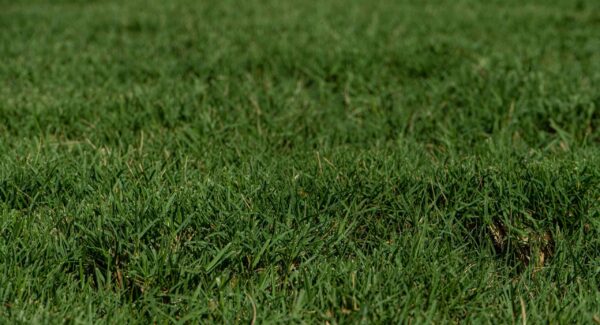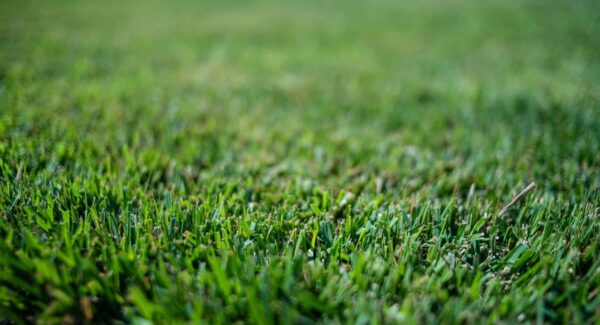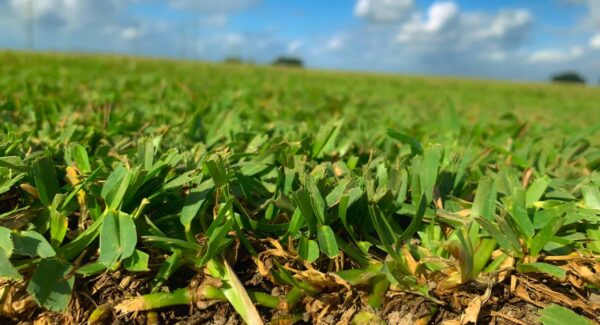How To Make Bermuda Grass Thicker?
You have a lawn planted with Bermuda grass and wonder how to make it thicker. Do you want a healthy lawn whose green color gives the whole family peace and satisfaction? You are in the right place to learn more about it.
A thicker lawn is characterized by a large number of shoots per square inch, resulting in better-looking grass with minimal bare spots. You can achieve this density through proper lawn care methods, including regular mowing at the right height, appropriate fertilization, efficient watering strategies, and aeration.
This blog post will cover all necessary activities to simplify the care process. You will learn more about:
- Characteristics of Bermuda grass – what makes it unique and how it grows
- Why the grass needs to be thick and the impact it has on the overall health and aesthetics of the lawn
- Specific steps in care and maintenance that will result in thicker grass
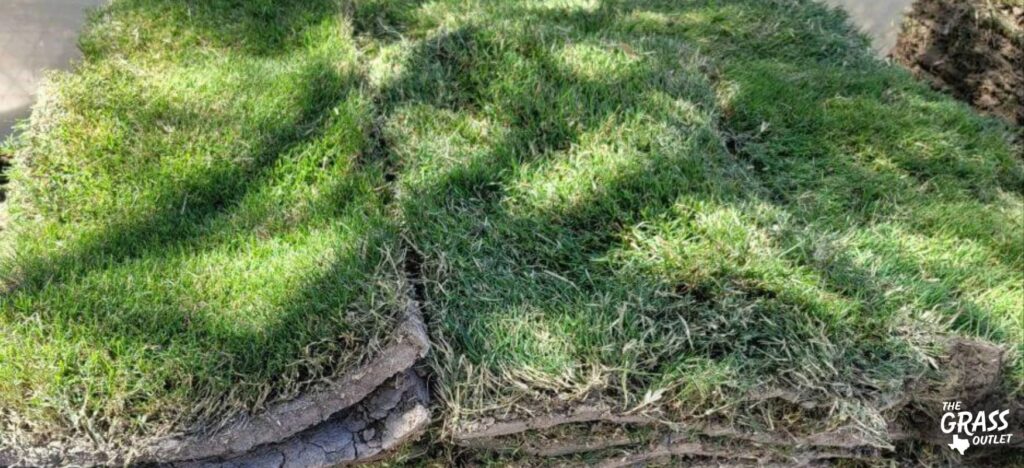
Why Is Achieving A Thicker Lawn Necessary?
There are several reasons why maintaining a thicker lawn is essential and what implications it has for its health, functionality, and aesthetics. Namely, a thick lawn will prevent the occurrence of weeds. Due to the higher density of the grass, sunlight will have fewer opportunities to reach the soil surface, further preventing the germination and growth of weeds.
When the lawn is thicker, it is consequently healthier and more disease-resistant. A lush lawn can better resist fungal infections and other diseases because pathogens have less space and opportunity to settle. Moreover, a well-maintained, thicker lawn promotes better air circulation and faster dew drying on the grass leaves, which are less favorable for developing diseases.
Bermuda grass is known for its drought resistance; a thicker lawn enhances this characteristic. Dense growth helps shade the soil, reducing moisture loss due to evaporation. It means the lawn can stay healthier and greener for longer during dry conditions without excessive watering.
A thicker, lush lawn with Bermuda grass is visually attractive and pleasant underfoot. It provides a uniform, vibrantly green carpet that enhances the overall landscape. A well-maintained lawn’s aesthetic value also contributes to your property’s value.
What is Bermuda Grass?
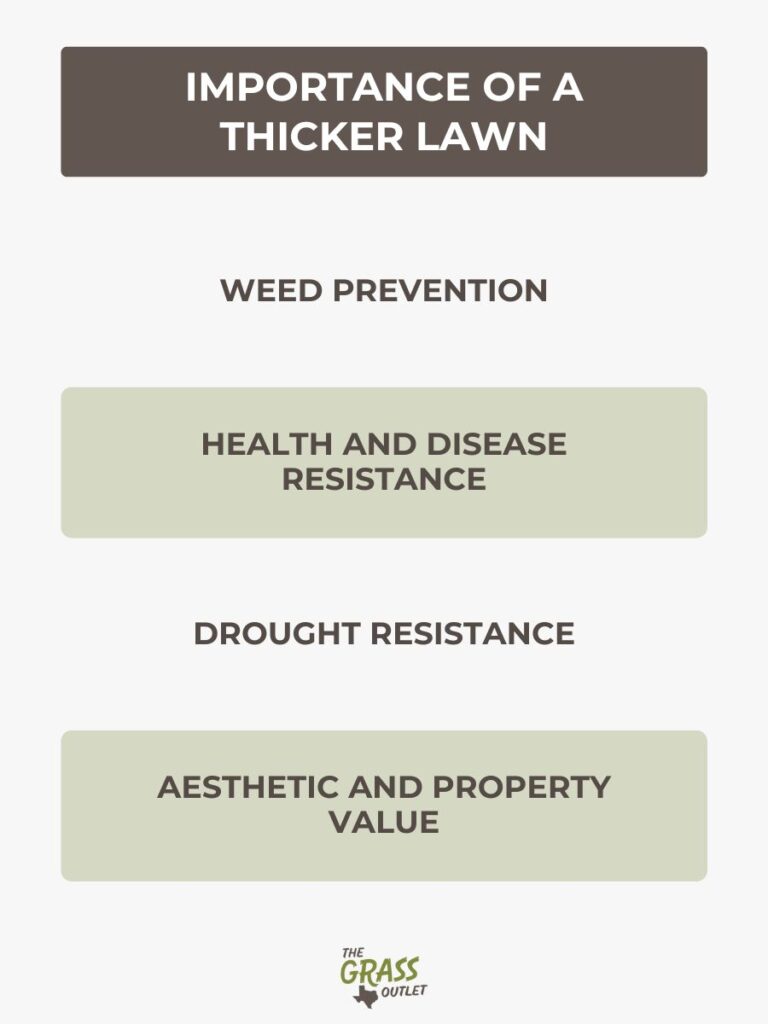
Bermuda grass is a warm-season grass that grows from mid-spring to late autumn and thrives in Texas’s climate, especially in San Antonio and Austin. Due to its robustness and very dynamic growth, it is famous as a grass for sports fields and golf courses.
Bermuda grass grows quickly during the warm months, usually from late spring to early autumn when temperatures are consistently above 64°F. As temperatures fall in autumn, its growth slows down, followed by a dormancy period during the winter.
Due to its aggressive growth habits, Bermuda can be invasive. It spreads through rhizomes (underground stems) and stolons (above-ground runners), quickly covering bare spots and potentially invading garden beds and neighboring lawns.
It is highly drought-resistant and can withstand extreme summer temperatures and limited watering. It can flourish in direct sunlight, perfectly compatible with the intensely sunny climate of Austin or San Antonio. This grass enjoys full sun all day long. Growing and developing requires a minimum of 6 to 8 hours of direct sunlight.
Bermuda is known for its ability to quickly recover from damage and wear, making it ideal for active foot traffic areas.
The 8 Most Important Steps for Creating a Thick Bermuda Grass Lawn
As a type of turf, Bermuda grass has unique characteristics, and experts recommend following specific care and maintenance steps to achieve a beautiful and thicker lawn. Let’s go through them one by one.
Mowing
Mowing the grass closer to the ground, especially for types like Bermuda, is crucial in promoting lateral growth, essential for achieving a dense and robust lawn. This practice encourages the grass to spread more horizontally than vertically, leading to several significant benefits.
- Bermuda thrives best when kept short. The ideal height is between 1 and 1.5 inches (2.5 to 4 cm) for residential lawns. During the growing season, mowing may be necessary every 3 to 7 days.
- Use a sharp mower blade to ensure clean cuts. Dull blades can tear the grass, leading to stress and increased disease susceptibility. Reel mowers or rotary mowers are recommended.
- During arid periods, you should increase the mowing height to about 2 inches (5.1 cm) to reduce plant stress.
Tip: Never remove more than one-third of the grass leaf height in a single mowing to avoid stressing the grass.
Watering
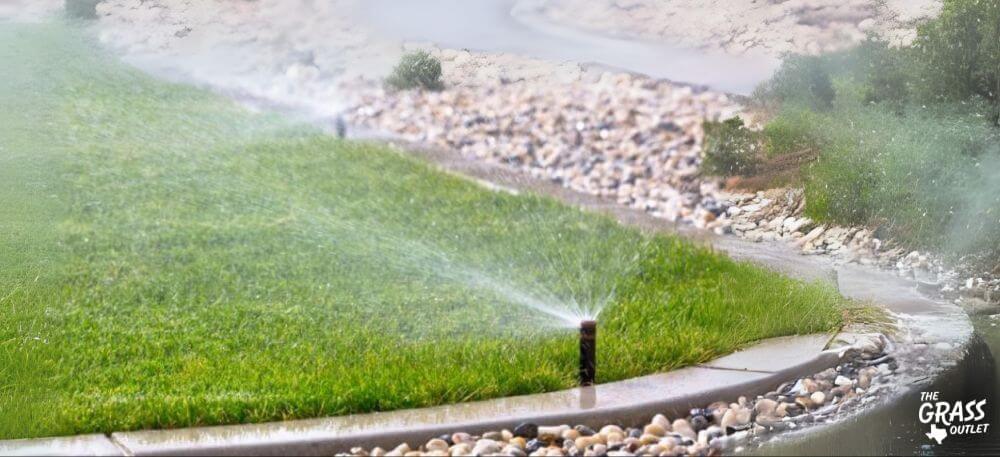
Instead of shallow and frequent watering, Bermuda grass benefits from deep and less regular watering. It encourages the roots to grow deeper into the soil, making the grass healthier and more drought-resistant.
Aim for about 1 to 1.5 inches (2.5 to 3.75 cm) of water every 7-10 days, depending on weather conditions.. It’s best to water the lawn when the grass shows symptoms of drought stress—a dull bluish color, rolled or folded leaves, and persistent footprints.
Water early in the morning, ideally before sunrise. This timing helps reduce water evaporation and allows the grass time to dry out before evening, which can help prevent lawn diseases.
During the growing season (spring through early fall), Bermuda grass will require more water to maintain its color, density, and health. However, you should reduce water during cooler or dormancy periods since the grass won’t grow actively, and the evaporation rate is lower.
Tip: Ensuring the soil receives enough moisture without retaining water is essential. You can check soil moisture using a screwdriver or a soil probe. The tool should easily penetrate the soil to a depth of 6 inches (15 cm) if the soil is adequately moist.
Fertilization
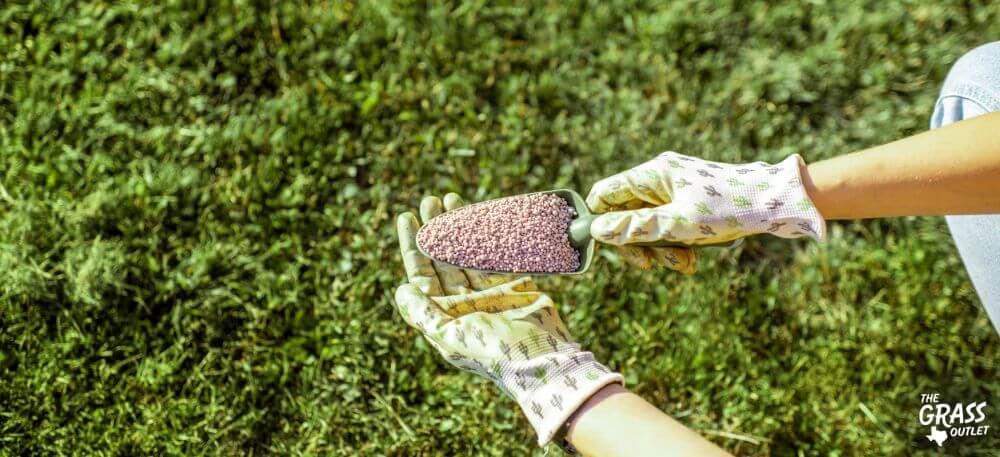
Before fertilizing, conduct a soil test to determine your soil’s nutrient levels and pH value. Bermuda grass prefers a slightly acidic to neutral pH environment (around 6.0 to 7.0). A soil test will help you understand which nutrients are lacking and allow you to adjust your fertilization plan accordingly.
What fertilizer is best for Bermuda grass?
- Look for a fertilizer with the right NPK (Nitrogen, Phosphorus, Potassium) ratio suitable for Bermuda grass. Bermuda grass requires a high level of nitrogen for dense, green growth. A standard NPK ratio for Bermuda grass is 4-1-2 or 16-4-8, but this can vary depending on your soil’s individual needs.
- Consider using a slow-release fertilizer to ensure a gradual supply of nutrients over time, reducing the risk of grass damage due to fertilizer burn.
Bermuda grass fertilization schedule
- Begin fertilizing in late spring or early summer when the grass grows actively and the soil temperature reaches about 65°F (18°C).
- Fertilize every 4-6 weeks during the growing season (spring through early fall) to support continuous growth. Avoid fertilizing with high nitrogen fertilizers in late fall, which can increase susceptibility to winter damage. However, potassium and phosphorus fertilizers will strengthen the roots, protecting the grass from freezing temperatures come winter.
- The last nitrogen application should be about 6-8 weeks before the expected first frost to allow the grass to prepare for winter, and winterizing fertilizers (PK) should be applied about 4 weeks before the first expected frost.
Controlling Weeds in Bermuda Grass
Effective weed control in Bermuda grass requires a multifaceted approach that includes maintaining grass health through proper cultural practices and the careful use of herbicides.
Pre-emergent herbicides for Bermuda grass
- Apply pre-emergent herbicides in early spring before soil temperatures consistently reach 55°F (about 12°C) at a depth of 2 inches (5 cm). You may need to apply them in late summer or early fall to prevent winter weeds.
- Follow the label instructions for the specific herbicide you are using. Generally, apply the herbicide evenly across the entire lawn using a spreader. Water the lawn after application if indicated on the product label, as this can help activate the herbicide.
Post-emergent herbicides for Bermuda grass
- Use selective post-emergent herbicides that target weeds but are safe for Bermuda grass. Ensure the product is labeled for use on Bermuda grass to avoid damage.
- Apply when weeds are actively growing and the Bermuda grass is not stressed from drought or heat. Early or late afternoon applications can be more effective when temperatures are lower.
- Consider spot-treating individual weed patches for minor weed infestations instead of applying herbicide to the entire lawn. It reduces herbicide use and minimizes risk to the grass.

Lawn Aeration For Bermuda Grass Lawns: When And How To Do It
Aeration is an immensely beneficial maintenance practice for keeping lawns healthy, especially for those planted with Bermuda grass. This dense, fast-growing grass variety can become compacted over time. Aeration involves puncturing the soil with small holes, allowing air, water, and nutrients to penetrate the grass roots. This process helps roots grow deeply and contributes to the overall health of the lawn.
Aeration improves air exchange between the soil and atmosphere, providing the grass roots with essential oxygen. Additionally, water can more quickly reach the soil after aeration.
Aeration enhances fertilizer penetration by breaking up compacted soil, making nutrients more available to the grass roots.
The best time for aeration
- The best time to aerate Bermuda grass is during its peak growth period in late spring or early summer. During this time, the grass can recover more quickly and better fill the open areas created by aeration.
How to Do It
- Perform aeration when the soil is moist but not saturated, as dry soil can be hard to penetrate. The day after light rain or watering is ideal.
Additional tips
- Core aerators are most effective for Bermuda grass. These devices remove small plugs of soil from the lawn, which is more effective than spike aerators that only make holes in the ground.
- Ensure the aerator pulls out soil plugs about 2-3 inches deep and spaced about 2-4 inches apart. For compacted soils, multiple passes in different directions may be necessary.
- After aeration, leave the soil plugs on the lawn to decompose naturally.
- If your lawn is thinning, overseeding after aeration can help thicken the grass. The holes created by aeration provide an excellent bed for new seeds.
- Following aeration, it’s an ideal time to apply soil amendments like compost or sand if you’re trying to improve soil structure or drainage.
Diseases That Attack Bermuda Grass And How To Prevent Them
Maintaining the health and vitality of Bermuda grass requires a comprehensive approach beyond merely addressing disease symptoms. A well-maintained lawn is less susceptible to common diseases that affect Bermuda grass, such as Brown Patch, Dollar Spot, Pythium Blight, Spring Dead Spot, Leaf Spot, and Melting-Out Disease. The key lies in creating an environment that naturally deters these diseases through interconnected practices.
Proper lawn care involves ensuring that the grass is watered deeply but infrequently, preferably during the early hours, to minimize moisture retention on the leaves, a condition conducive to fungal diseases. Balanced fertilization is essential; it equips the grass with the strength to resist diseases while preventing the overly dense conditions that diseases exploit.
Regularly mowing at the recommended height for Bermuda grass reduces stress on the lawn, further enhancing its resistance. Additionally, addressing thatch accumulation and ensuring adequate soil aeration are key steps that improve drainage and air circulation around the roots, thereby reducing disease risks.
Maintaining clean equipment to prevent the spread of pathogens and ensuring good drainage to avoid water retention is also important. Such practices are fundamental in creating a robust lawn that can withstand and recover from disease pressure.
While these strategies are instrumental in disease prevention, Bermuda grass is also susceptible to pest insects such as chinch bugs, armyworms, sod webworms, and mole crickets, which can increase stress on the grass and make it more prone to diseases.
Shaded Areas: How To Ensure Bermuda Grass Gets Enough Sun
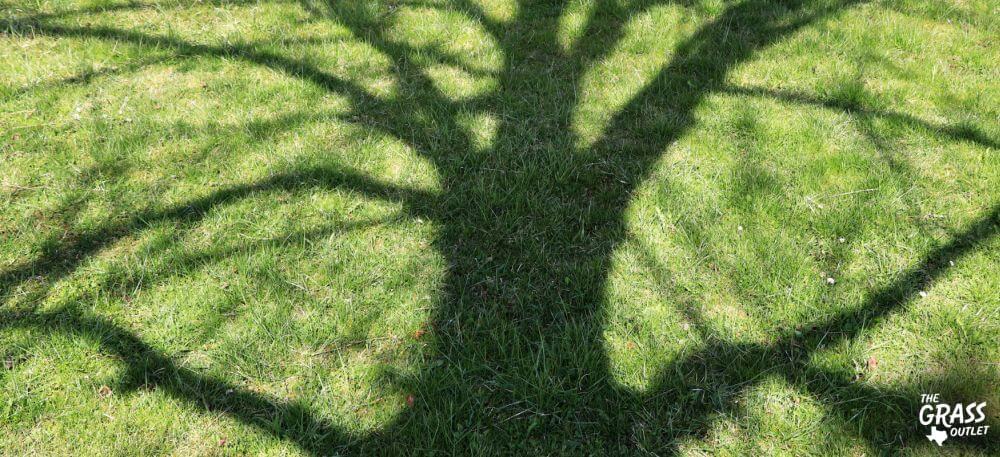
Bermuda grass thrives in full sun, requiring at least 6 to 8 hours of direct sunlight daily to maintain its health, density, and vibrant green color. However, shade from buildings, trees, and other structures can limit sun exposure, affecting the growth and vigor of the grass.
Here are a few strategies for managing shade and ensuring adequate sunlight for Bermuda grass:
- Pruning and trimming overhanging branches: Regularly pruning trees and shrubs to thin out overhanging branches can significantly increase sunlight penetration to the ground. Focus on removing lower branches and thinning the canopy to allow more light to reach the grass without completely removing trees or sacrificing the landscape’s aesthetics.
- Choosing shade-tolerant grass varieties: While Bermuda grass is known for its need for sunlight, some varieties or other types of grass may offer better shade resistance. Consider planting shaded areas with grass that is more tolerant of shade, such as St. Augustine or Zoysia. This approach can provide a more uniform lawn appearance under varying light conditions.
- Adjusting lawn care practices:
Mowing height: In shaded areas, slightly increase the mowing height of Bermuda grass. It allows grass leaves to capture more sunlight.
Watering: Shaded areas often retain moisture longer than sun-exposed areas. Adjust your watering schedule to avoid overwatering, which can lead to fungal diseases.
Fertilization: Apply fertilizer carefully in shaded areas. Grass in shade requires less fertilizer than grass in full sun because its growth rate is slower.
- Improving soil conditions: Enhancing soil quality can help Bermuda grass cope with the stress of reduced sunlight. Aeration and applying organic matter can improve soil structure and nutrient availability, supporting grass health.
- Considering alternative ground covers for deep shade: In areas where the shade is too dense, even for shade-tolerant grasses, consider planting alternative ground covers that thrive in low-light conditions. Suitable options might include certain types of ivy, pachysandra, or ferns, which can provide an aesthetically pleasing, low-maintenance solution.
- Using reflective surfaces to increase sunlight: Strategically placing reflective surfaces, such as white stones, garden mirrors, or light-colored walls, can help redirect sunlight to shaded areas. This method is unconventional but can be effective in certain landscapes to improve light availability.
Removing Brown Spots From Bermuda Grass And What To Do With Thinned Areas
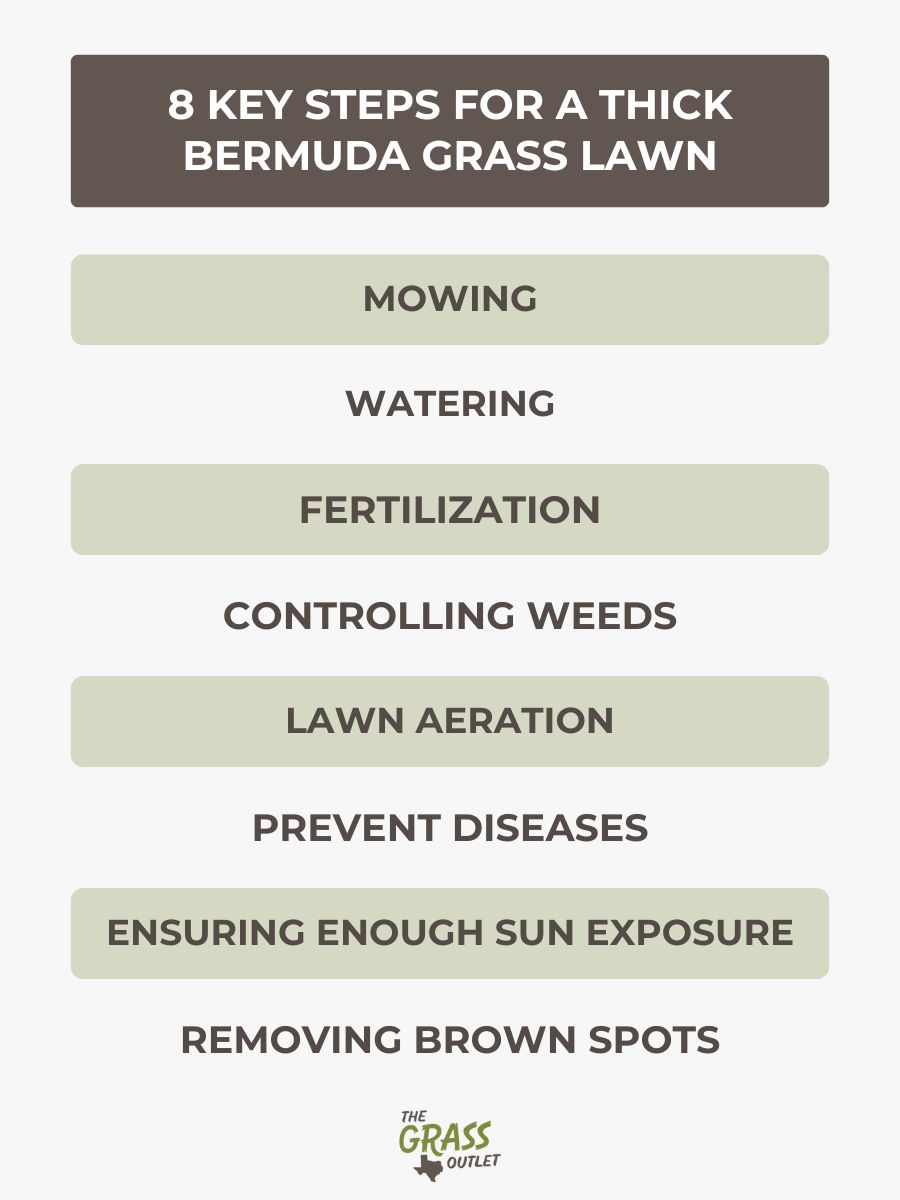
To address the brown spots on Bermuda grass and what to do with thinned areas, it’s essential first to identify the underlying cause of these problems. Common causes include fungal diseases (such as Brown Patch), insect damage, improper watering, poor drainage, insufficient fertilization, compacted soil, improper chemical applications, or excessive shade.
What to pay attention to:
- If you identify a fungal disease as the cause, apply a fungicide recommended for the specific disease affecting your lawn. Follow application instructions carefully. Improve air circulation and reduce moisture on the grass by watering in the early morning hours, allowing the grass to dry before evening.
- Inspect the lawn for signs of insect damage. Common Bermuda grass pests include grubworms, chinchbugs, and armyworms. Apply appropriate insecticides if pests are identified.
- Ensure the lawn receives an adequate amount of water. Bermuda grass requires about 1 to 1.5 inches (2.5 to 3.75 cm) of water every 7-10 days through rainfall or irrigation.
- Conduct a soil test to determine nutrient deficiencies. Apply balanced fertilizer based on soil analysis recommendations to meet the grass’s nutritional needs.
- Aerate compacted soil improves the grassroots’s water, nutrients, and air penetration. Aeration helps relieve compaction and encourages root development.
- Overseeding can help thicken the lawn in thinned areas. Choose Bermuda grass seed suitable for your climate and soil conditions. Overseeding is best done in late spring or early summer when the grass is actively growing.
Conclusion
By understanding Bermuda grass, its characteristics, and the importance of maintaining it density and health, you can make your lawn more resistant to diseases, weeds, and pests, enhancing its aesthetic beauty. Furthermore, a well-maintained lawn increases the value of your property.
We hope this guide has clarified the most important steps for establishing a thicker Bermuda grass lawn. If you have further questions or concerns, don’t hesitate to contact The Grass Outlet for advice.
